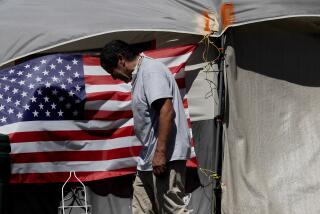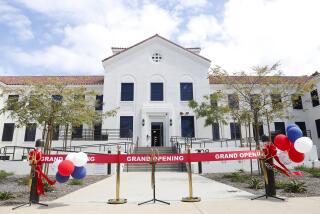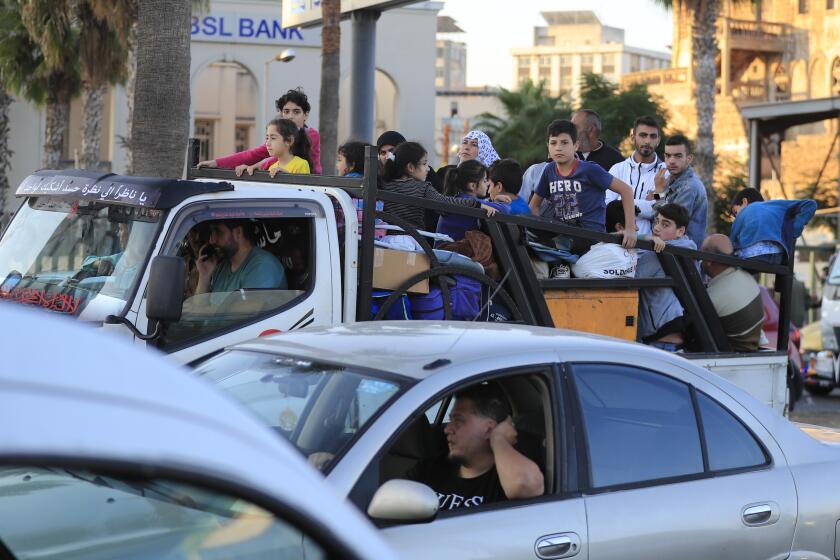Center Works to Heal Victims of Land Mines
PHNOM PENH, Cambodia — Much of the world may have signed a treaty pledging to eliminate land mines, but in war-ravaged Cambodia--with more mines per capita than any other country--the problem isn’t ready to go away.
Communist Khmer Rouge guerrillas and royalist rebels battling Cambodian regulars in the jungles of northwest Cambodia are still laying mines, Western diplomatic sources say. For all practical purposes, they add, the treaty signed in Ottawa in early December is irrelevant, for now at least, in this troubled nation.
Even before the fresh outbreak of fighting, the country was littered with millions of mines, tantamount to one for every Cambodian. Since 1970, 60,000 Cambodians--the vast majority of them civilians--have been killed or maimed by land mines.
Un Sophal, a handsome, soft-spoken former government soldier, has heard about the land-mine treaty, but he hasn’t paid much attention to the details. “It comes too late for me,” said Sophal, 30, who lost both his legs above the knees while on patrol four years ago.
Not long ago, Sophal, like many other amputees in Cambodia, would have been reduced to begging in the streets of Phnom Penh or wasting away in a village where friends and family would have considered him a burden.
But thanks to the efforts of a Vietnam veterans organization in the U.S., Sophal has a new lease on life--and a steady income--assembling and painting wheelchairs for the victims of Cambodia’s land mines. His life is better now, he said, and he likes to think that the lives of the people he has helped regain mobility are better too.
*
The organization that has given Sophal hope is the Vietnam Veterans of America Foundation, founded in 1980 by Robert Muller, a Marine veteran who lost the use of his legs in a war he volunteered to fight in and later joined protests against.
In 1993, Muller, an early supporter of U.S. reconciliation with Vietnam and one of the key leaders in the movement that led to the land-mine ban, set up the National Rehabilitation Center outside Phnom Penh. Virtually every day since then, a victim of the explosive devices that cost as little as $3 to make and as much as $1,000 to remove has appeared at the center’s door, needing help.
Sain Toath, a 28-year-old farmer who lost a leg when a mine blew up in his rice paddy, was at the center the other day, being fitted for a prosthetic right foot. Within a week, he said, he hoped he again would be doing something he has been unable to do for six years: harvest rice.
“They tell me I’ll be walking again in a few days,” he said. “After that, I can start working. Until some friends told me about the rehab center, I had mostly given up. I thought I’d never be able to do anything but sit around the village.”
*
The foot Toath was trying on was pioneered by a doctor in India, Karen Sethi, and is called a Jaipur foot. Waterproof and sculpted to look like a real foot, it can be worn with or without sandals and is ideal for the region, where farmers often work long hours in rice paddies and where in rural areas people usually wear sandals, not shoes. The center, which has turned out more than 5,000 prostheses and 2,000 wheelchairs in a workshop that is staffed mostly by land-mine amputees, makes the foot for its patients and sells extra ones to various aid agencies for about $6 each.
Larrie Warren is the American director of the center, whose $2-million annual budget is supported by the U.S. Agency for International Development and private contributions. He says of his work: “One of the accomplishments that I’m proudest of here is setting up a mobile clinic that goes to the provinces where the problem is most severe. The first village we pulled into, we found 200 people lined up, waiting for us.”
Warren, a Vietnam-era conscientious objector whose father was a career Air Force enlisted man, has recently added increased responsibilities. A single man, he has adopted two Cambodian children--a boy and his sister--whose parents were killed in a 1994 Khmer Rouge raid on their village. Samath, 7, lost his leg to automatic-weapons fire. His sister, Sokhoam, was shot in the stomach.
More to Read
Sign up for Essential California
The most important California stories and recommendations in your inbox every morning.
You may occasionally receive promotional content from the Los Angeles Times.










